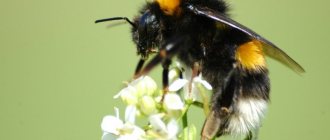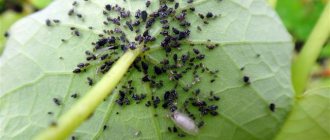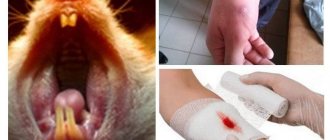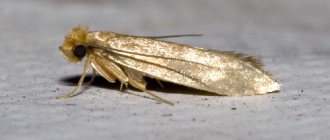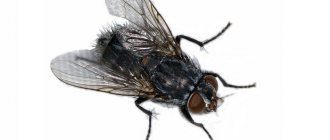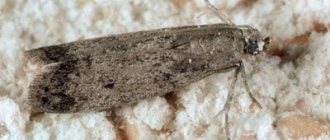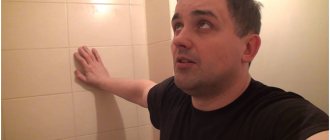Humanity has suffered from lice for many millennia. Despite the improvement in people's quality of life, head lice outbreaks do not stop. We’ll look at where lice come from, how to prevent infection and how to treat them below.
The louse is a human parasite. It lives only on it and spreads only among people. To feed, this insect needs human blood; parasites cannot go without food for a long time, so they do not live far from the victim. To transmit lice, you need contact with an infected person or their belongings. There are three types of lice in humans:
- head;
- pubic;
- wardrobe
The mechanism and methods of infection for each species are somewhat different, but in general, lice appear after contact with a patient or his personal belongings.
Lice cannot be contracted from domestic or stray animals; human lice do not live on them.
Lice and personal hygiene
For some reason, it is believed that lice only occur in people who neglect basic hygiene rules. This is wrong. Absolutely anyone is at risk of getting lice. Dirt or, conversely, cleanliness is not an obstacle for parasites. People who are less careful about their hygiene may take longer to notice that they have lice. And they also take longer to take measures to remove insects, so their lice can take very advanced forms.
What happens if you don’t remove lice:
- bites cause severe itching, a person scratches the wounds, introducing dirt and infections into them, this leads to dermatitis and even blood poisoning;
- the patient becomes irritable due to incessant itching;
- Head lice leave traces of their vital activity on the hair and scalp, causing the hair to become tangled and tangles appear.
Sometimes pediculosis is confused with other diseases with similar symptoms, for example, scabies, psoriasis, and dermatitis. But pediculosis differs from them in the presence of lice and nits on the human body. To diagnose the disease, you need to carefully examine the scalp. Closer to the roots of the hair, you can see very small white lumps - these are nits, parasite eggs. Adults can also be seen.
What folk methods does Komarovsky recommend?
Dr. Komarovsky does not recommend using folk remedies to treat lice , since they are not as effective as pharmacological drugs and can harm the child. An exception is table vinegar , which can be used to wet your hair. But it does not help destroy the eggs, but only promotes their detachment from the hair, after which they need to be combed out with a comb. Please note that after this procedure the use of a pharmacological anti-pediculosis agent is still required.
ATTENTION! Treatment of lice with kerosene is popular among people. But Komarovsky strongly advises against this. This method is not only ineffective and outdated, but also very risky .
Kerosene is a toxic substance. It can be easily absorbed through the skin, causing harm to the child's body. The same applies to treatment with alcohol or vodka.
Pediculosis infection in children
The most common question: where do lice come from in children? A child picks up parasites in a group setting. Kindergartens and schools are places where children stay for a long time in a limited space. Children usually have easy contact with each other: they play nearby, hug, fight, touch their heads. This happens especially often now - in the era of constant use of gadgets: children and teenagers can spend hours head to head over a smartphone screen. These are favorable conditions for the spread of pediculosis. Lice cannot jump or fly, but they crawl quite quickly. They easily pass from one person to another.
Unfortunately, some parents do not consider it necessary to deal with lice, believing that this is a normal childhood condition, a certain stage in life that just needs to be survived. But this is far from true. If you do not treat a child for head lice, he will become a constant source of lice in the community. It will constantly infect other children. That is why in children's institutions it is important that the nurse regularly examines children for the presence of lice, identifies carriers of parasites and takes measures to isolate them from healthy children until they are completely free of parasites.
Tips for preventing lice
All of Komarovsky’s advice on pediculosis converges on the need for regular examinations as a preventive measure. By checking your child's head monthly, or better yet weekly, you can detect parasites in a timely manner and begin to fight them.
On a note!
The inspection should be carried out in a well-lit room and with a magnifying glass. You need to focus your attention on the area of the back of the head, forehead and temples.
How are lice transmitted?
Where do lice come from in adults who, unlike children, do not come into such close contact with so many people?
Use of personal belongings
The easiest way to become infected with lice is to wear a hat from a sick person. At least a couple of adult individuals will definitely remain on the infected person’s cap. When putting on a hat, even for a short time, they will move from the headdress to the hair and remain on the head of the new victim. If among the “defectors” there is a fertilized female or a pair of a male and a female, then we can guarantee that in a couple of weeks the head will be swarming with nits and hatched nymphs, that is, the person will get lice.
Through the bed linen
Where do body lice come from? These parasites lead a specific lifestyle. They appear on humans only during feeding. The rest of the time they wait outside the human body: on bedding, in clothes, furniture, textiles. If you use these things, you can pick up insects on your clothes or body and transfer them to your home, where the lice will multiply and become parasites. Pubic and head lice are also transmitted through bedding.
In public transport
This is a very common method of infection. Lice can be found on soft and hard seats, individual fabric headrests, on bed linen, mattresses and pillows used in long-distance trains, on blankets provided on airplanes, cafes, restaurants on open terraces in the cool season, or on ships. Of course, insecticidal surface treatment is carried out in public transport, but not as often as we would like. Sometimes the congestion of transport does not allow it to be processed in a timely manner. In addition, in many types of transport, passengers change constantly. The person who was sitting in the seat in front of you and got off at the previous stop could leave behind a couple of parasites on his back, which, in search of food, would immediately move on to a new victim.
Through the water
Oddly enough, lice can live in water. Therefore, there is also a risk of catching them in a pond, swimming pool, sauna or plunge pool, in a water park or spa.
In places of shared residence
Very often, disease outbreaks occur where many people live in a confined space. These are, as mentioned above, children's institutions, as well as summer and health camps, hospitals and sanatoriums, prisons, temporary stay centers, etc. The risk increases if in such places people cannot promptly and regularly carry out hygiene procedures, change and wash clothes.
In public places
For head lice to appear, sometimes it is enough just to sit or stand next to an infected person. A child may develop lice after playing in the sandbox or on the playground. Parasites do not live permanently somewhere on the street or in public places, but can be there temporarily, waiting for a new host.
You can catch insects in hairdressers and beauty salons. It would seem that in such establishments the level of hygiene should be high. However, clients are different, and craftsmen do not always sterilize instruments and treat the workplace.
What to do and how to treat pediculosis in children at home
Komarovsky advises starting treatment for pediculosis as early as possible in order to prevent relapse and its spread in the community. Having identified this unpleasant problem in a child, parents should immediately report it to the kindergarten teacher or class teacher.
You can get rid of lice at home. It is important not only to destroy adult parasites, but also to eliminate nits. Otherwise, the disease will make itself felt again after some time.
Permethrin-based medications can effectively combat adult lice . Nits must be combed out and removed manually, since many of them remain viable even with the use of pharmacological drugs. To comb out lice, the doctor advises using a metal comb with fine, fine teeth. Plastic combs are used for prevention.
As for cutting a child's hair or shaving him bald, today there is no need for this - medications can cope with lice without this measure. The child's clothes and bedding must be thoroughly boiled, washed and dried in the open air. Dry laundry should be ironed thoroughly.
IMPORTANT! During therapy, the child should not attend school or kindergarten , go to public places or have contact with other children. The duration of quarantine must be at least three days from the start of treatment.
In addition to using medications, Komarovsky advises teaching the child a number of important rules. Parents should explain to him the dangers of using other people's combs, hats, and headphones. The material of children's clothing also plays a role, since lice can be transmitted through it. The doctor advises paying attention to modern raincoat fabrics.
What to do to avoid getting lice
Regardless of where lice come from, there are steps you can take to avoid getting head lice. Families with children are at risk. During head lice outbreaks, your child's head should be regularly inspected for lice and nits. If one or more insects are detected, it is too early to talk about pediculosis, but you already need to start fighting. A few individuals will not cause significant harm if they are destroyed immediately.
To avoid catching lice, you should not use other people’s things, especially hats and combs. There is no need to spend the night in dubious places or use other people's bedding. There is no need to visit public establishments that do not undergo timely and regular sanitization. This is especially true for hairdressers, beauty salons, swimming pools or saunas - public places where they work with hair or where a person takes off clothes and leaves personal belongings.
After traveling on public transport or staying in places of shared accommodation (hospitals, for example), if there are suspicions that there could be people with lice there, it is worth treating your head and clothes with anti-lice agents and combing your hair with a fine comb as a preventive measure.
It is worth understanding that lice is a highly contagious disease. If it is caught by one of the family members, then the entire household will be treated. To get rid of lice, you need to use special products, for example, products produced by MediLIS Laboratories LLC: Permifen, Malathion, Super, Bio. They are available in different types and concentrations, applied to hair and skin, and can also be used to treat children over 5 years old. There are also means for treating premises, because insects can remain outside the human body for some time. If they are not destroyed everywhere, after hair treatment they will again transfer to humans. Therefore, the fight against parasites must be comprehensive.
How to get rid of diseases popularly called subcutaneous lice
Both real and “subcutaneous” lice (or rather, diseases that are called that) need to be fought to prevent their spread and the appearance of complications, for example, purulent infections in places where scratching occurs.
Scabies mite
If symptoms of scabies appear, you need to see a doctor as soon as possible. He will help you distinguish scabies mites from other skin diseases, and will also prescribe medications. The disease does not go away on its own; it can only subside intermittently. To recover, you need to completely destroy the tick and its eggs.
Most often, ointments or emulsions are used. The most effective of them are:
- emulsion and ointment Benzyl benzoate;
- Permethrin cream and lotion;
- aerosol Spregal;
- Sulfuric ointment.
There is no need to prescribe medications for yourself, because only a doctor can note any features of the disease or possible contraindications. In addition, in a medical facility, a skin scraping must be taken for analysis.
When scabies appear, complete disinfection of the infected person’s home and personal belongings is mandatory. All clothes, linen, children's toys are washed in boiling water or hot water with the addition of soda. Surfaces are treated with the same soda solution or bleach. Anything that cannot be washed (mattresses, pillows, blankets) is thrown away or taken out into the cold or sun for several days.
During the treatment process, it is important to destroy parasites not only on the body, but also on the things of the infected person.
Video: diagnosis and treatment of scabies
demodex mite
Iron mites are often more difficult to defeat than scabies mites. If you experience symptoms of demodicosis, you should definitely contact a dermatologist, who will prescribe a skin test and, based on its results, select medications. Typically, complex treatment is required, which includes antibacterial drugs for oral administration and topical agents (gels, ointments). It is also necessary to improve the functioning of the hormonal, immune and nervous systems in order to avoid exacerbation of the disease in the future. During treatment, it is recommended to follow a diet limiting fatty, spicy, fried foods and sweets.
Doctors often prescribe the following medications:
- Trichopolum;
- Baziron;
- Spregal;
- Metronidazole;
- Metrogil gel;
- Sulfuric ointment;
- permethrin ointment.
Traditional methods of treatment for demodicosis are ineffective. However, their use in conjunction with the use of medications will not be superfluous. It is good to clean the affected areas with tar soap, and instead of water for washing it is better to use herbal infusions of celandine or wormwood.
It is recommended to apply diluted tea tree oil, which has an antibacterial effect, to the affected areas.
Demodex is not as contagious as the scabies mite, so there is no need to disinfect your living space. But to avoid reinfecting yourself, you need to use clean towels and pillowcases every day during treatment. And for the loved ones of the sick person, prevention will include following the rules of hygiene, proper nutrition, strengthening the immune system and fighting stress.
Video: history of treatment of demodicosis
Symptoms of subcutaneous lice or scabies
Subcutaneous lice in humans appear upon contact with contaminated objects or the skin of a sick person. The incubation period lasts about 2 weeks. But from the first days you can notice the symptoms of subcutaneous lice.
- Scabies begins with skin lesions between the fingers. An unbearable itching appears, which intensifies in the evening and progresses at night. At this time, the scabies mite is especially active.
- Bubbles filled with liquid appear on the affected area. After scratching, wounds remain and passages can be seen.
- As the disease progresses, the extent of damage to the body spreads. The pathological process involves the arms, legs, neck, abdomen, back, genitals, and face. Lice do not live under the scalp.
- The body is covered with a small rash, and large red blisters appear in some places. The manifestations on the buttocks are clearly visible.
- The skin in the affected areas becomes thicker, and swelling of the hands is observed.
Lack of measures leads to the addition of a secondary infection, complicating the situation.
Where does infection most often occur?
Each person may be at risk of lice infestation in different environments. There are a large number of sources and risk groups where the likelihood of infection is especially high.
Places where the risk of lice infestation is high include:
- • preschool and school educational institutions - children spend a lot of time together during games and communication, they are more contactable than adults, so they become infected with lice faster and more often;
- • crowded public transport, where it is impossible to find a secluded place;
- • military barracks or prisons, where large concentrations of people are observed in small areas;
- • communal apartments where cleaning rules are not followed;
- • hospital wards, dorm rooms or sanatoriums - if you lie with your head on a pillow where an infected patient previously lay, there is a risk of contracting head lice through the pillowcases.
Visiting baths, saunas, hairdressers and gyms most often does not pose a risk of contracting lice.
Thus, it is possible to identify three provoking factors under which the risk of infection will increase significantly: overcrowding, crowding of people in small areas, unsanitary conditions.
Disease prevention
regular examination of the child's head as the main method of preventing head lice . It should be done approximately once every two weeks. It is important to use a magnifying glass and provide good light in the room as the parasites move very quickly.
Similar inspections should be carried out in schools and kindergartens. This helps prevent the spread of the epidemic. The doctor notes that there are no special preventive remedies for pediculosis . Only regular examinations and careful hygiene help. The child should not use other people's hats, combs, hairpins and other personal items through which parasites can be transmitted.
Pediculosis in children is an unpleasant disease. But, following the advice of doctor Komarovsky and other specialists, you can quickly get rid of it. Pharmacies offer a number of medications aimed at quickly and effectively eliminating this problem.
- about the author
- VK profile
Methods of disposal
To get rid of nits and parasites, you need to use all the methods simultaneously:
- mechanical;
- chemical;
- folk
The first is to comb the hair with your fingers or a specially purchased comb. In parallel with this, you need to use chemicals - pediculicides with effective insecticides:
- benzyl benzoate;
- malathion;
- permethrin;
- phenothrin.
Folk methods of fighting parasites include:
- washing the hair and affected areas of the body with tar soap;
- shaving your head;
- use of Dichlorvos;
- applying hellebore water or vinegar solution;
- using a mixture of kerosene and vegetable oil.
Ways to get rid of lice.
What types of lice do humans have?
The reasons for the appearance of lice are related to their characteristics and lifestyle. There are three types of parasites that live on humans and feed on their blood:
- head louse - lives and lays eggs on the scalp, it needs hair to move and attach nits to them, without hair the insect will not be able to move on the head, but it may well leave eggs, gluing them to the skin scales;
- pubic louse - lives on parts of the body on which not only hair grows, but also contains apocrine glands that secrete a special secret that is attractive to parasites; this is the genital area, around the anus, in the armpits, on the eyebrows and eyelashes;
- The body louse is a specific species that does not live on the human body; it prefers to lay eggs not on it either, but uses a person only for food, going out to hunt him, the rest of the time he hides in clothes, bedding and accessories, and other textiles.
Each of the three species lives in a strictly defined place, that is, the pubic louse cannot parasitize the head, and the head louse cannot parasitize the genitals. And they are transmitted from person to person in the same way: a head louse will try to get on the head, a pubic louse on the genitals, a body louse on the clothes next to the person.
Treatment methods
The earlier diagnostic methods are carried out, the easier the therapy will be for the patient. It is important to eliminate the pathogen in a timely manner to prevent cosmetic defects and other complications. Therapists recommend using an integrated approach in the fight against head lice. The main directions of treatment have been developed.
- Traditional methods
. These are minor techniques for treating head lice. They are aimed at eliminating irritation and activating regenerative processes. Methods have been identified that can eliminate the lice themselves, but the procedures can be dangerous for humans, take a lot of time, and require repeated use. For example, alcohol compresses, kerosene treatment. Many of these techniques cause itching, allergies, and discomfort. They worsen the condition of hair and skin. Therefore, therapists and pediatricians recommend using traditional techniques. - Pharmacy products
. There are many shampoos, lotions, and creams that instantly destroy the pathogen. They cover them with a film, penetrate the internal structure of the body of lice, and destroy them. Most drugs are based on permitrin. This is the active component isolated in European countries. Thanks to the product, you can get rid of pediculosis in 1 day.
Many therapists and pediatricians recommend Leisner shampoo. This is a cosmetic product that is used to treat the head of an affected person. When using it, side effects rarely occur, mainly due to individual intolerance. It is enough to apply the drug for 10 minutes, then rinse thoroughly with water. There will be no traces of adults or eggs left. The active component spreads to parasites, destroying them from the inside. After washing off with water, the lice drown and die. Additionally, nits are peeled off from the hair.
Unlike other drugs, after using Leisner you do not need to use a special comb. It is enough to comb with a regular comb.
A special feature of the shampoo is its gentle composition. It contains no toxins or poisons. It has hypoallergenic properties. Therefore, treatment can be carried out for children or adults. The nits will be completely destroyed.
Life cycle of a tick
The female goes deep under the skin and lays eggs. During its life, it makes numerous passages, and its excrement provokes a severe allergic reaction in the form of itching. Insects can only live under the skin; they come to the surface to mate.
Life cycle of a tick An adult female lives about 1.5 months. The larvae develop in the egg for about 2 weeks. The young generation crawls out at night to mate. The males die, the females again burrow under the skin and build burrows.
Important!
A clear clinical picture of scabies appears within 1 month after infection. Every day the itching intensifies, the appearance of scabies throughout the body causes insomnia, irritability, fever, and a general deterioration in well-being. A child or an adult can get sick.




